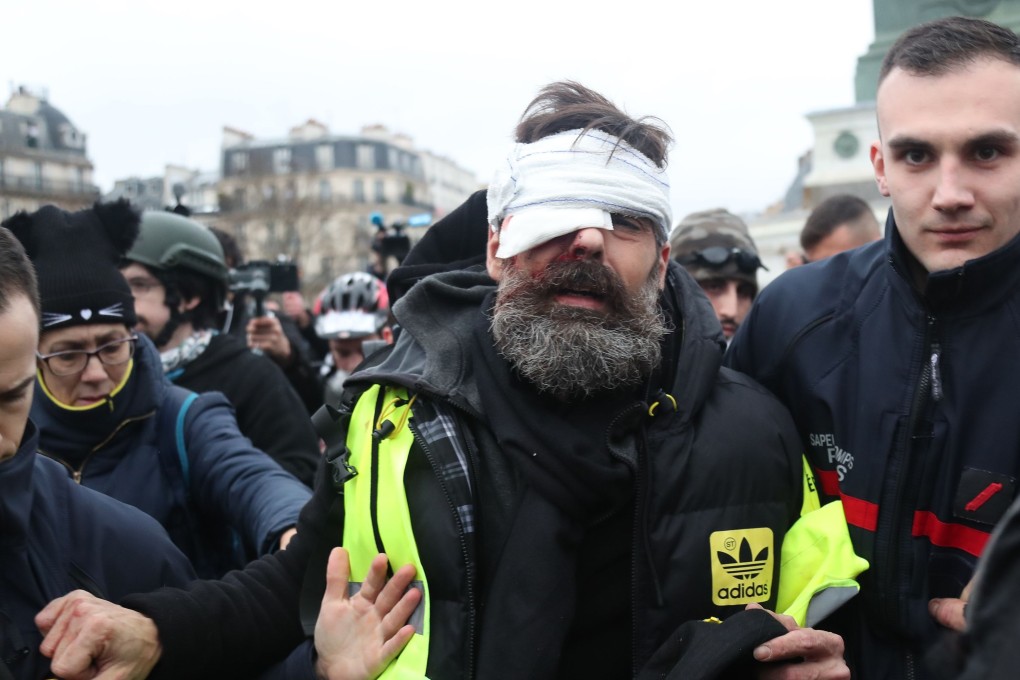‘Yellow vest’ leader ‘disabled for life’ by protest injury, says lawyer
- Jerome Rodrigues says he was hit in the eye by a rubber bullet while warning people to move away from the Bastille monument in Paris

A prominent French anti-government “yellow vest” activist, badly injured in the eye at a protest, was hit with one of the controversial rubber bullets used by police, his lawyer said on Sunday.
Jerome Rodrigues’ lawyer fears he will be “disabled for life” after he was injured in clashes with police in Paris on Saturday during an 11th straight weekend of protests against President Emmanuel Macron.

Rodrigues, a 40-year-old builder, was placed in an artificial coma overnight after the incident at the Bastille monument in central Paris.
“He is in shock. He will be disabled for life. It is a tragedy for him and his family,” lawyer Philippe de Veulle told BFM television, adding he was lodging a complaint against police.
The bearded Rodrigues, who has become a well-known figure in the “yellow vest” movement with 50,000 followers on Facebook, was live-streaming the protest on the website when he was hit.